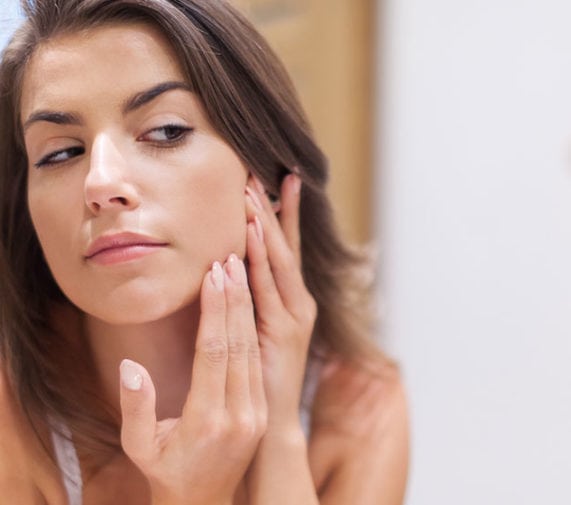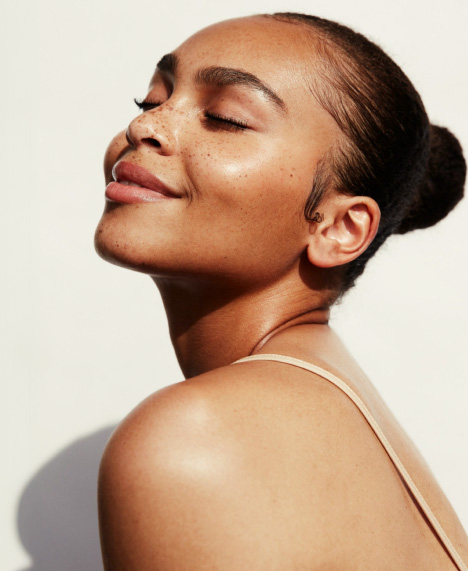Acne and teenagers are a notorious duo. In high school, students battle hormones and arm themselves with a not-always-effective arsenal of over-the-counter, pimple-popping potions and lotions in the quest for a clear complexion. Although it’s true that acne generally spikes during puberty, setting its sights on ruining every class picture, first dance and even graduation, it can stalk you through college and even adulthood. But the news isn’t all bad: Here are ways to take care of your skin when faced with life’s bumpy encounters.
First Off, Know What Acne Is
Acne is a condition in which dead skin cells, bacteria and sebum produced from your oil glands plug your pores. The American Academy of Dermatology reports it’s the most common skin condition in the United States, affecting about 40 to 50 million of us at any given time.
Because there are different kinds of pimples, there are different kinds of treatments. Blackheads aren’t dark because of dirt. They become dark when the clogged pore opens to the surface of the skin and mixes with the air. Whiteheads are clogged pores covered by a thin layer of skin—they’re sometimes tough for even a professional to push out. To treat blackheads and whiteheads, try a gentle manual exfoliate and/or products with benzoyl peroxide, salicylic acid, retinoids/vitamin A, witch hazel, an all-in-one lactic acid and soothing hyaluronic acid, glycolic acid, sulfur or resorcinol. Or, have your dermatologist pop and remove the blemish.
Cystic acne shows up as often painful, pus-filled lumps underneath the skin (nodules are harder than cysts). A dermatologist can treat these with a cortisone injection. As they’re often deeply set, really, really don’t try to pop them on your own. You can try products you’d use for blackheads and whiteheads (above), applying ice may reduce pain and inflammation, and your doctor may prescribe an over-the-counter cortisone cream or a dermatologist-assisted cortisone shot.
A papule is a small, red bump at the site of an inflamed pore or hair follicle. It can be infected and/or part of a rash and usually doesn’t contain pus. Prescription medications recommended by a dermatologist such as retinoids, internal or topical antibiotics such as erythromycin or clindamycin are the most efficient treatments.
Acne-related pustules are larger than average pimples, with yellow pus that forms when your pore walls get irritated and break. They’re sometimes caused by allergies. Get these checked out by a doctor, especially if you have a sudden outbreak.
What Causes Acne
It’s not known with 100% certainty what causes acne, but hormone fluctuations (ala puberty, a woman’s period, pregnancy, menopause and birth control) can cause a flare-up. High humidity, pollution, stress, oily makeup or being in an oily work area, bacteria, wearing something that causes friction (like a helmet or backpack), and medications can also set it off. And then there’s heredity, which you can’t do much about. Acne usually shows up on the face, chest, upper back and shoulders, because that’s where we have the most oil glands. If you’re looking for a dietary fix, some studies show dairy, sugary foods and saturated fat may be linked to outbreaks.
Teenage acne is usually caused by excess oil production, but adult acne is usually more linked to hormonal changes and slower cell turnover causing buildup. Ask your doctor if hydrafacials, ultherapy or BBL acne treatments could help.
Common Myths About Acne
Acne isn’t necessarily caused by dirty skin, so don’t scrub obsessively or attempt to dry out your skin to a parchment-paper-like crisp—that can actually make your acne worse! As for eating chocolate, there’s not a lot of evidence (thank God) that it’s linked to acne either. And as tempting as it is—you know, immediate gratification and all —don’t squeeze or pop your pimples, because that could lead to scarring.
Acne Treatments: Outside Job
Here are some proven things you can do to help your acne:
- Wash your face gently
- Treat acne early
- Change your sheets and pillowcase weekly
- Look for non-comedogenic and non-acnegenic makeup and skin care products
- Wash your makeup brushes
- If it seems like it’s not getting better, see a dermatologist, family doctor or internist for help.
Treatments Are Also an Inside job
Eat a healthy, balanced diet and keep track of any foods linked to your breakouts. Treatments are available, but an equally important prescription is to love yourself. It’s not just about vanity—acne can take a heavy emotional toll. Let everyone see your beauty inside and out!
twistup
Love OrangeTwist?
Join our twistup membership and receive a $100 gift card today!




